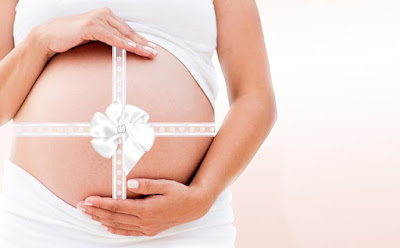PREGNANCY TRIMESTERS
Distribution of Trimester of Pregnancy and Condition of Pregnant Women in Each Trimester
PREGNANCY TRIMESTERS - For women who are planning, are currently, or have been pregnant, the word "trimester" may sound familiar to the ear. In Latin, trimester comes from the word "trimestris", which means tri (three) and mensis (month). So, a trimester is technically defined as a 3-month period that relates to the cycle and pregnancy.
 |
| PREGNANCY TRIMESTERS |
Although not all months have the same number of days, the general rule of thumb is that each trimester has 3 months of pregnancy.
The pregnancy period is divided into 3, namely the early (first trimester), middle (second trimester), and late pregnancy (third trimester). There are several common methods used by medical service providers to divide trimester groups, as follows.
1. Trimester division based on pre-conception
Currently, in the health sector, trimesters are determined according to this general guideline. The average pregnancy will last for 40 weeks or about 280 days. This count starts from the first day of the last menstruation. Through this method, the trimester is determined by 40 weeks divided by three.
So technically, the first trimester is 1-13 weeks. The second trimester begins at week 14 and ends at 27 weeks of pregnancy. Meanwhile, the third trimester starts at 28 weeks until the 41st week of pregnancy or the time of delivery.
2. Division of trimesters by conception
This method is rarely used because of the difficulty of determining the actual date of conception, except in IVF programs. Generally, women only know when their last period started. That's why most doctors will use the pre-conception method instead of this method.
This method uses the guideline that the baby's age in the womb is 38 weeks after conception. In this method, the calculation of conception usually occurs 14 to 16 days after the first day of the last menstrual cycle.
Thus, the second trimester begins at 14 weeks 5 days and the third trimester at 27 weeks 3 days. Again, this method is rarely used even though the trimester time division is similar to the commonly used pre-conception method.
What Happens in Each Trimester?
In each trimester, a number of changes will occur in your body and the developing fetus. Even before getting pregnant, women will go through a number of processes. Starting from the fertilization process to implantation which will eventually become a developing fetus.
1. First trimester (up to first 14 weeks)
You will experience many symptoms and complaints during this trimester, as an adjustment to the hormonal changes of pregnancy. In the early weeks, your stomach may not look bloated yet, but a lot of things will happen in your body.
The hormonal changes that most contribute to pregnancy symptoms are increased levels of estrogen and hCG which cause nausea and vomiting that women will experience during the first few months of pregnancy.
In addition, you will also feel more tired than usual during the first trimester, a symptom caused by increased levels of the hormone progesterone, which can cause drowsiness.
2. Second trimester (14-26 weeks)
In the second trimester, unpleasant symptoms such as early pregnancy may decrease or even disappear. Sleep may become easier and energy levels may increase. Although unpleasant symptoms tend to go away, other symptoms may appear as the development of the fetus begins to increase.
You will feel more pressure on your pelvis, like something is weighing you down. The stomach will start to look bloated and the skin around the stomach tends to itch because of the stretching of the skin. You will also experience more back pain due to the weight on the front of your body.
But between 16 and 18 weeks of pregnancy, you will feel one of the wonders of pregnancy, namely a kick from the fetus.
3. Third trimester (27 weeks to the end of pregnancy)
When the uterus pushes against the diaphragm, the muscles that regulate breathing are disrupted, making you feel more congested. Ankles, hands, feet, and face may swell from retaining more fluid and slowing blood circulation. The baby will also begin to descend into the birth canal to prepare to be born into the world.
That's an explanation of the division of trimesters during pregnancy, as well as an overview of the conditions in each trimester. Hopefully it can add knowledge to prepare for your pregnancy.
Related Search:
- pregnancy trimesters,
- pregnancy trimesters by week,
- pregnancy trimesters months,
- pregnancy trimesters and weeks,
- chart pregnancy trimesters,
- pregnancy trimesters by weeks,
- fetal development pregnancy trimesters,
- weeks of pregnancy trimesters,
- pregnancy trimesters in weeks,
- pregnancy trimesters pictures,
- weeks in pregnancy trimesters,
- pregnancy trimesters weeks,
- how long are pregnancy trimesters,
- pregnancy trimesters broken down,

Post a Comment for "PREGNANCY TRIMESTERS"